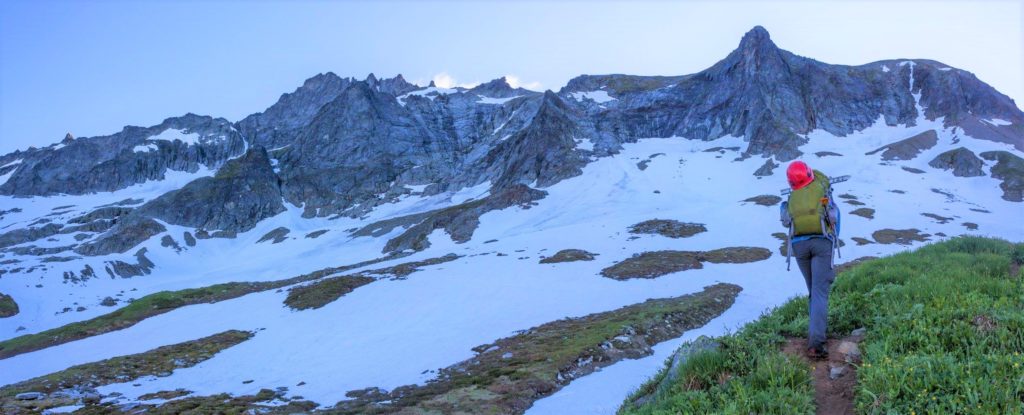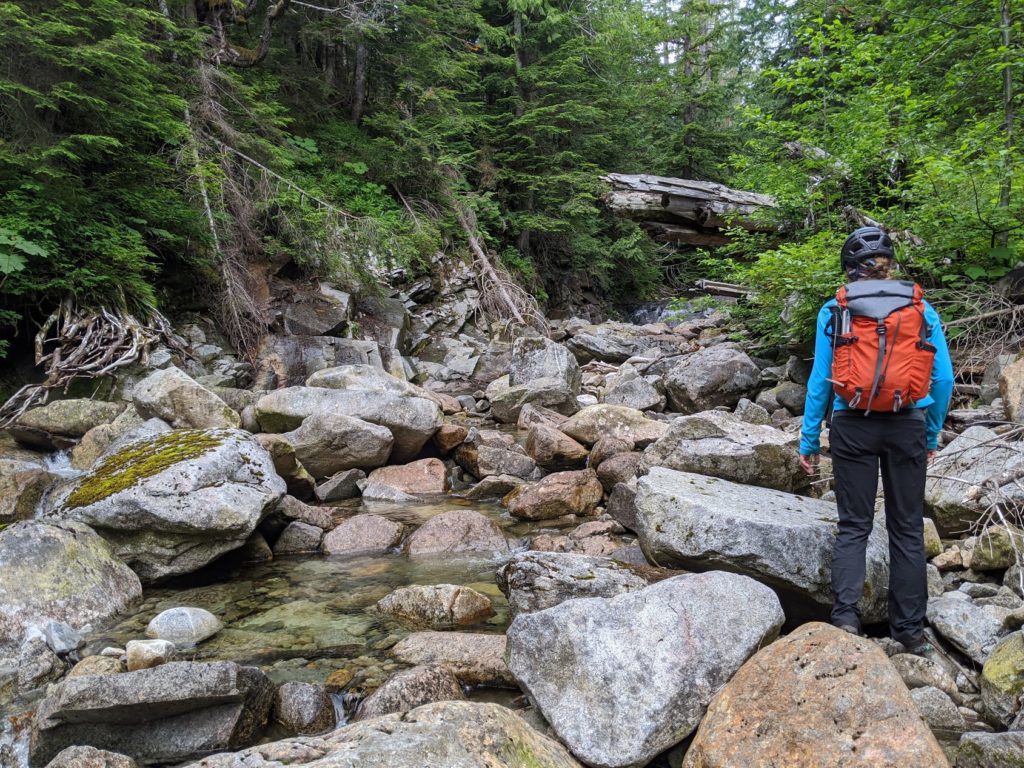Here are some simple tips to help ensure your safety while enjoying the backcountry.
Plan Your Trip
Look up route information in guidebooks and websites. Visit or call the nearest ranger station for road and route conditions. Review the weather and avalanche conditions for the area you are visiting. You can find these resources under Links.
Next, create a trip plan and share it with your emergency contact. Please download the Everett Mountain Rescue Trip Plan, fill in the appropriate information and print. Give this form to a responsible person (or Personal Locator Beacon contact if appropriate) who can provide the information to Search and Rescue in the event you do not complete your trip as scheduled.
To report someone overdue please call 911, do not contact Search and Rescue directly.
Carry the Necessary Equipment & Dress Appropriately
Be sure to carry the Ten Essentials at all time. Cotton is not a backcountry adventurer’s friend! Stick with synthetic clothing that wicks away sweat and also dries faster in the event of rain. Bring extra clothing in case the weather changes. Be sure your footwear provides adequate protection for your feet.
Make it a Party of Three & Stick Together
Whenever possible, invite a friend or two along for the trip. If something unexpected happens, this gives you a resource to help handle the situation or get help. When you are on trail, stay together. This helps ensure that one person doesn’t get lost.
Knowledge Increases Safety
Do you know how to use your gear, such as your compass or GPS unit? Can you tell if a storm is approaching? Do you know how to deal with first aid issues if they arise? If you don’t, attend a class. There are several groups that provide reasonably priced training. One great example is The Mountaineers. They are an outdoor climbing club that provides classes and trips for all levels of experience in hiking, climbing, alpine climbing, backpacking, first aid, kayaking, and the list goes on.

If You Get Lost
Mountain Warehouse has some helpful information on this topic:
- Do not panic. That is the worst thing you can do and will likely cause things to get worse.
- Follow the STOP rule
Stop – As soon as you realize you may be lost, stop, stay calm and stay put. If you keep going you are likely to get even more lost. Sit down, take some water and eat something.
Think – How did you get to where you are? What landmarks should you be able to see? Were you heading North or West? Where were you when you were last sure you knew where you were?
Observe – What can you see? Where on the map is it? Where is the sun in the sky? Roughly how long until sunset? What does the weather look like it is going to be? What supplies do you have? How long will they last?
Plan – Never move until you have a plan. Based on your thinking and observations, come up with some possible plans and then act on the best one.
- Check for phone coverage. If you have some then you can call for help. They may be able to explain how to get home or they may come to get you.
- Use a whistle to try and attract attention. Three blasts is the universal signal for help.
- If you have any bright items get them out as it will make it easier for a rescuer to find you.
- If you are confident enough you may wish to try and retrace your steps to find the path you were on earlier.
Staying the night
- Find a sheltered spot that will keep you from the rain and wind before it gets too dark
- You will likely need to put on extra layers to avoid hypothermia setting in.
- Do not sleep beside a river as the noise might mean you cannot hear a rescuer.
- Start a small controlled fire. This will give you some warmth but also the smoke is a good way to signal for help.
- Create a HELP or SOS sign with rocks in a clearing. This will make you more visible from the air.
- Hang any colorful items of kit from tree branches around you. This will make it easier for a rescuer to find you.
Read the full article here.
